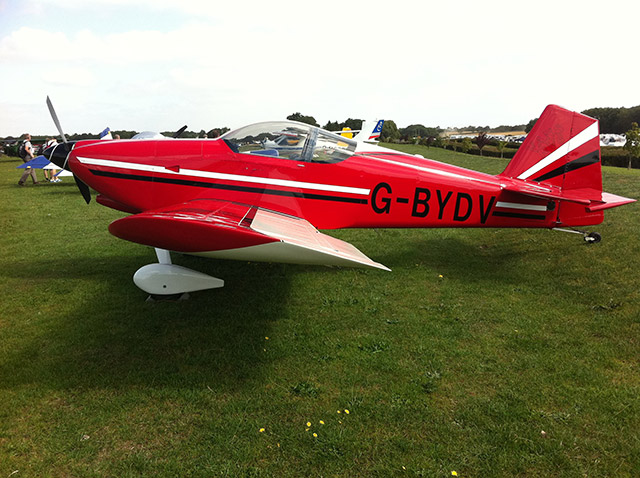Van’s RV–6/6A
The RV–6 (tailwheel) and RV–6A (nosewheel) kit has been out of production for 15 years at Van’s Aircraft in Aurora, Oregon, but many are for sale at a budget-buy price. The kit was produced from 1986 to 2001. It’s speedy (155 knots true airspeed, according to one owner), carries two people side by side, and has room for baggage.
Look for one that represents the designer’s (Van’s) intent. Builders who add a more powerful engine than recommended, plus heavy leather seats and lots of fancy avionics, find they have a heavier aircraft with a higher landing speed. If that is the case, you’ll especially need the second recommendation: Seek training. Kitbuilt aircraft are different from the factory-built world.
Aircraft value companies don’t evaluate homebuilt and Experimental aircraft. The number registered is difficult to determine because model names often include the builder’s name. Weight is only “suggested” by the factory and can vary by 200 pounds. Horsepower can vary, as can the type of engine. Ask yourself, “What is my mission?”
THE REAL WORLD
Paul A. Rosales is an enthusiastic, high-time RV–6A owner. It took three jobs (two for him, one for wife Victoria), five years of 12-hour-day weekends, and reduced sleeping hours for the couple to realize their dream of building an airplane, but now they have flown to most of the 50 states. He also evaluates kitplane pilots for an insurance company. “Since they are custom built, no two are going to be the same, ever,” Rosales said.
When builders decide to use three-quarter-inch rivet spacing instead of one-inch spacing, they add more rivets and that makes the airplane heavier. Throw in some avionics and leather seats, and you have an aircraft with a high sink rate. If pilots don’t properly manage their energy on landing, that could be a problem in a kitplane with spring-steel landing gear without shock absorbers, Rosales said. The spring steel can take a drop from 10 feet to the surface in one second, but no more. When you flare an RV–6A, speed disappears quickly. Do that at 10 feet, as many non-kit pilots do, and you could be in for a jolt. “[The RV–6A model] just can’t take a porpoise,” Rosales said. With a 180-horsepower engine in his aircraft, he gets about 156 knots true airspeed. “Figure out what your budget is first, and then stay within that budget. Then go out and look at some airplanes. If you’re not knowledgeable, take someone with you who is. Make sure you can get in and go for a ride. What do you plan to do with it?” he said.
Email [email protected]
Whom to contact
There is no single builder’s club or owner’s club. Most owners go to www.vansairforce.net for general information.
Vref value
Most airplane valuation companies do not provide values for Experimental aircraft. There’s too much variance between aircraft.
Recent advertised prices
Listed in Trade-A-Plane at the time this was written were eight Van’s RV–6/6A aircraft costing $41,500 (unpainted) to $69,900. Most were in the 60s and high 50s. Barnstormers.com had 19 with some listed as “projects” that were partially completed and were advertised for $25,000 to $35,000.
Insurance costs
AOPA Insurance Services estimates a $60,000 Van’s RV–6 flown by a 150-hour (total time) pilot will cost $1,500 per year to insure. The pilot must obtain 10 hours with a certified flight instructor and complete 10 hours of solo time before taking passengers.
How many in the fleet?
That’s a difficult question. The FAA database shows an FAA-registered fleet of 2,277 Van’s Aircraft RV–6 airplanes if you search without using the manufacturer’s name. Airpac PlaneBase shows 1,319 plus 601 more if you search without using the hyphen in RV–6.
Financing
AOPA Finance estimates $417 per month for a $60,000 loan at 5.5 percent with 15 percent down.
Airworthiness directives
There’s no such thing as an airworthiness directive for kitbuilt aircraft, a Van’s factory rep said. Look for factory service bulletins instead. There was an RV–6A service bulletin on the nose gear to give it more ground clearance for rough fields.
Biggest plus
Handling.
Biggest minus
Small for two “oversize” people.
Things to watch out for
Is it overweight?
What else to consider
Other Van’s models; Rans kits and ready-to-fly models.


